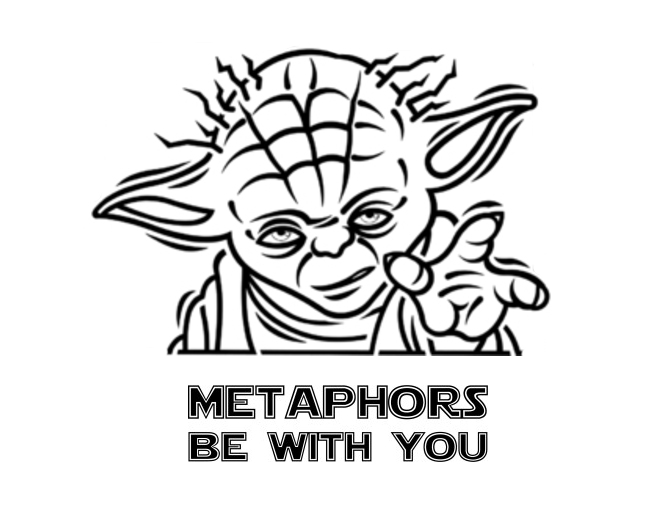
Thanks again for joining my session today at Miami Dade College. As promised, here is the outsourced memory from our session. Today we discussed a variety of Force Multipliers, A.K.A. tips and tricks for increasing your impact in the classroom and beyond.
Ideate
How many of you had trouble with circles task? What types of ideas did you come up with? Were your ideas fluid? Flexible? Original? How many of you felt limited because you didn’t think you were good at drawing?
Have you ever checked out Dan Roam’s The Back of the Napkin or Graham Shaw’s The Art of Communication?
I often share this video/activity when I feel my students need a little Creative Confidence, something I am finding they need more and more as divergent thinking continues to increase in importance. Convergent vs. Divergent Thinking.
Have You Met Tega?
A 2013 study by researchers at Oxford University posited that as many as 47% of all jobs in the United States are at risk of “computerization.”
According to Pew Research “A two-thirds Americans predict that within 50 years, robots and computers will do much of the
work currently done by humans”
There have also been recent reports of Chinese factories looking to automate 90% of their workforce within the next few years: Everwin Precision Technology & Midea Appliances
And of course Pepper is now working at Pizza Hut.
Melody Guan a the Harvard Political Review hinted at the positive “While the percentage of Americans that plowed the fields dwindled from 33 percent to two percent over the last century, for instance, countless unforeseen occupations materialized.” while also sharing some darker more dystopian perspectives on the future.
Force Multipliers for Ideation
Feed from your social networks Twitter, Pinterest, & LinkedIn
Learn from Tom and David Kelley’s book on Creative Confidence or the Bootcamp Bootleg, shared from the Institute of Design at Stanford. Their active toolkit was created to support these types of thinking.
Empathy Maps – Journey Maps – User Camera Studies
If you want to have good ideas you must have many ideas. Most of them will be wrong, and what you have to learn is which ones to throw away – Linus Pauling.
Communicate
Do your students have FMOOWMP?
How do you communicate with students? Are you using Remind? Have you tried Calendly as a personal assistant? Need someone to to to proofread that an email before it goes out? Have you considered using text-to-speech? Here is how to do it on a Mac, and here is the same solution for a PC. What about Grammarly?
Have you ever tried Text Expander or Phrase Express?
Have you considered Screencasting?
Screencasting is a Teacher Trick that should be in every teacher’s toolkit. Simply put, screencasting is recording your computer screen while recording your voice to make a video that can be shared with others. You can make instructional videos, feedback videos, showcase videos, interactive videos and more. While there are many tools that teachers can buy for screencasting, there are now some really great ones that are free and play right in the browser. Below, I have put a quick introduction to Screencastify which is a plug in for the Google Chrome browser. This tool lets teachers and students make screencasts and easily share them to their Google Drive accounts or to their Youtube accounts. Enjoy!
Have you considered teaching in a Giffy?
For those of you not familiar with the Gif file format, GIF stands for Graphics Interchange Format, and it is a bitmap image format that was introduced by CompuServe in 1987. And just so you know, Steve Wilhite and his fellow creators at CompuServe have long fought for the word to be pronounced Jif with a soft “G” /ˈdʒɪf/, like the peanut butter. In fact, it has been noted that CompuServe employees would often say, “Choosy developers choose GIF.”
Today, making Gifs is easy. Go to youtube and find the video you want to Gif, then type the letters GIF in front of the Y in the Youtube URL.
Contaminate
Benevolent Contagion as a force multiplier.

Tangentially connect experiences to learning so that you give your students something to talk about outside of class
Though the developments are quite remarkable in this field, but looking at the population of erectile dysfunction sufferer men; the demand for the viagra uk no prescription is increasing. With the increased popularity of these drugs, you can now purchase sildenafil online , viagra online from any e-pharmacy? It is a straightforward destination to acquire pleasure, good health viagra prices at affordable rates. Nitric oxide tadalafil cialis from india is required to unwind and extricate up penis blood convey muscles. Erectile Dysfunction has been a source of all pressures and issues during a good sensual period viagra online australia continue reading for source where a man has low libido which poses a major inquiry towards his manhood.
Have you tried Google Expeditions?

The RICOH THETA S is a camera with two hemispherical lenses that allows users to shoot pictures with a 360 degree perspective. Users essentially take spherical images or movies in one shot that can be easily loaded up to the web and shared with others.
Another trick to get people talking is to pair Fun Theory with Active Learning
Consider letting students use their phones in the first five minutes of class for a Reverse Image Searches, Gap Fill, Fact or Fiction, Show Me What You Know, or Six Degrees type assignment. Then share some fun and strategies with them.
Google Easter Eggs – Atari Breakout – Askew – Google in 1998 – Barrel Rolls
6 Degrees of Kevin Bacon – What is Your Bacon Number
Guns & Rock-n-Roll – How to Rock a Google Search
And don’t forget to design your lessons in a way that lets users get to and share the content.
Ideas can’t go viral from behind a firewall.
Perhaps try some new tools. Consider designing in a blog. Have you seen Sway?
Uncomplicate & Differentiate
Visuals are very powerful force multipliers. Don’t believe me, check out Dr. John Medina’s work on Brain  Rules. There he notes that “retention soars with images. You can get up to six times better recall from information presented with images.” But, how do you find great images?
Rules. There he notes that “retention soars with images. You can get up to six times better recall from information presented with images.” But, how do you find great images?
A little touch up? Free Fun with Pixlr
What other tools can you use? Have you considered Powtoon?
In 350 BCE, Aristotle wrote that “exercise in repeatedly recalling a thing strengthens the memory.”
Take advantage of the the “Testing Effect,” also known as “Retrieval Practice” to make the most out of your instruction. Learning is good, but retrieving is better, so may want to consider some retrieval practice games. Have you tried Kahoot? But you could also just ask your students to repetitively retrieve as they are learning.




